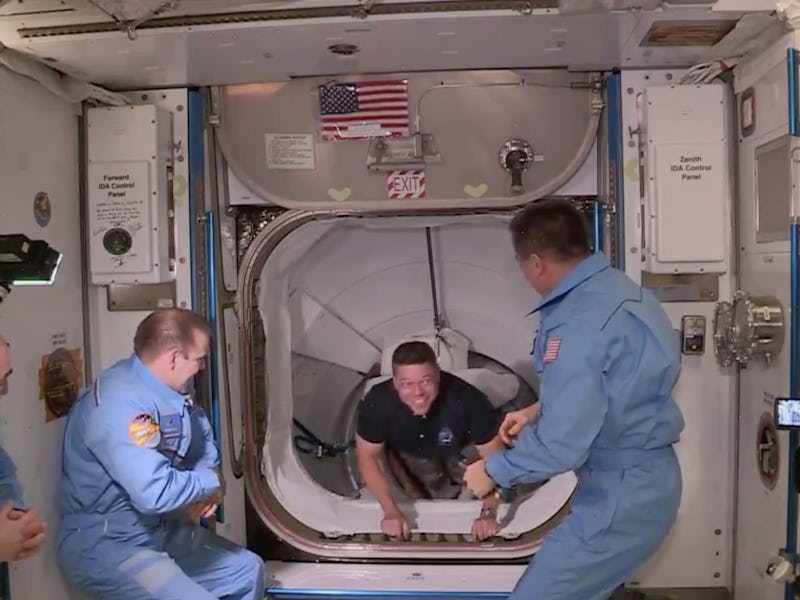SpaceX Crew Dragon: watch the historic moment capsule docked with ISS
SpaceX and NASA made history this weekend, as the Crew Dragon capsule successfully docked with the International Space Station.

The SpaceX Crew Dragon made history Sunday. When the human-carrying capsule docked with the International Space Station, it marked the first time that NASA astronauts had reached the station from a commercial spacecraft.
The agency, which broadcast the moment on its NASA TV channel, announced that astronauts Bob Behnken and Doug Hurley joined the rest of the crew at 1:02 p.m. Eastern time. The pair joined NASA's Chris Cassidy, as well as Anatoly Ivanishin and Ivan Vagner from Russian space agency Roscosmos.
"We’re just happy to be here and Chris [Cassidy] is going to put us to work," Hurley told NASA TV after reaching the space station. "Hopefully we will fit in and not mess too many things up."
Watch the moment in action here:
With the capsule successfully attached, the space station now has five spacecraft attached and looks a little something like this:
The docking process marks the endpoint of a successful and historic launch. The "Demo-2" mission is the first manned mission with the Crew Dragon, SpaceX's capsule designed as part of the NASA Commercial Crew program. SpaceX has been working alongside Boeing since 2014 to develop a means to transport NASA astronauts to and from the International Space Station.
The success of the program brings manned spaceflight back to the United States, ending one of the quirks of NASA's recent operations. When the shuttle program ended in 2011, the agency started renting seats on Soyuz rockets from Russian agency Roscosmos, taking off from Baikonur Cosmodrome in Kazakhstan. As well as bringing the flights a little closer to the base of operations, the Commercial Crew program will mean NASA won't have to keep renting seats on Soyuz rockets at around $80 million each.
The "Demo-2" mission is the first step toward this new arrangement. The capsule used a Falcon 9 rocket taking off from the Kennedy Space Center Launch Complex 39A in Florida, the historic site that previously hosted the Apollo missions. The rocket lifted off at 3:22 p.m. Eastern time on Saturday, May 30. A previous launch was scheduled for May 27 at 4:33 p.m., but this was scrubbed due to weather conditions.
After Sunday's feat, this plan has come to life.
"This has been a long time in the making and I think it’s been really astonishing to see how it came together," NASA administrator Jim Bridenstine said in a post-docking broadcast.
NASA updated the public after the docking process in a special broadcast:
The pair's length of stay at the space station is still unclear, potentially ranging from anywhere between a few weeks to a few months. During a press conference at the start of May, the agency explained that a key determiner could be the state of the capsule.
From here, the first non-test mission will be the "Crew-1" launch. This mission, tentatively scheduled for the third quarter of 2020, will send up NASA astronauts Victor Glover, Michael Hopkins, Shannon Walker, and Soichi Noguchi from Japanese agency JAXA. After that mission, the capsule could be used for private missions from the likes of Space Adventures and Axiom Space.
The Inverse analysis – Perhaps one of the most remarkable things about Sunday is how one of the capsule's most highly-publicized features went unused.
The docking process was completed autonomously by the capsule just like the rest of the launch, but the team was prepared to take over at a moment's notice. The interior of the Crew Dragon contained a series of touchscreen interfaces, so Hurley could take charge and steer the capsule himself.
This would have been no easy task. SpaceX released a simulator ahead of the launch, so players at home could try out the process for themselves. Players needed to control for positioning, speed and orientation of the craft as it came in for docking. Bridenstine claimed to have completed the simulation on his first attempt.
Fortunately for NASA and SpaceX, this feature went unused.